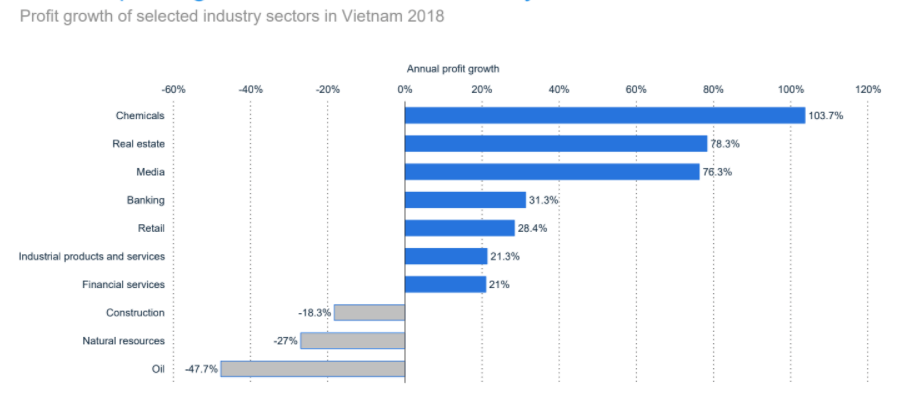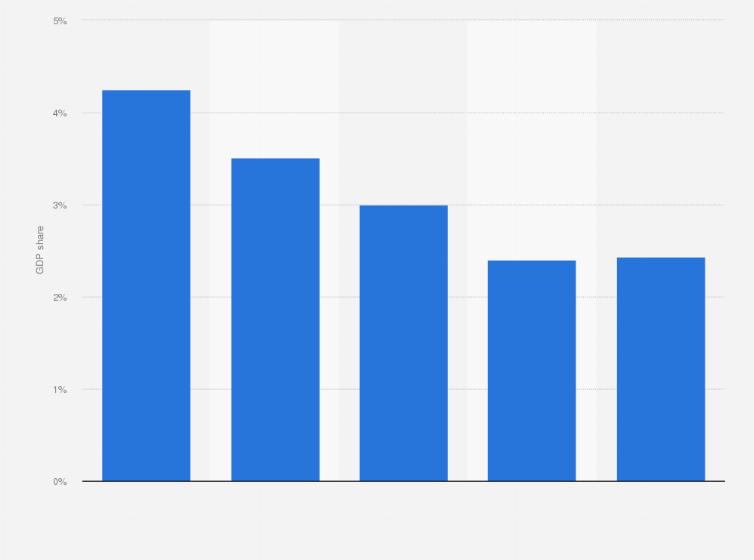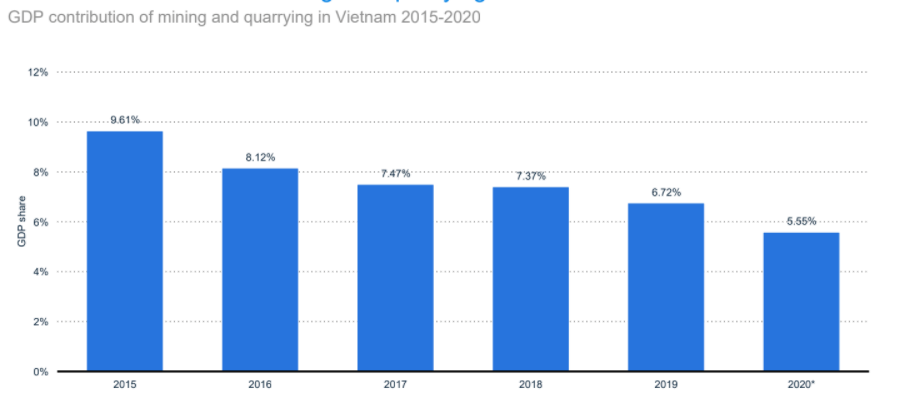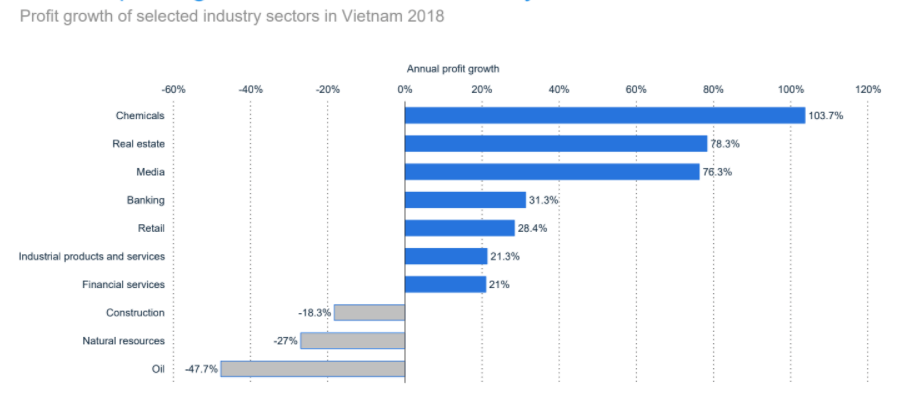
The “Chemicals and Resources in Vietnam Report 2020” provides valuable insights into the chemical and resource sectors in Vietnam. This report highlights key trends and developments in various industries, including chemicals, agrochemicals, fossil fuels, metals and minerals, plastic and rubber, and pulp and paper. By analyzing production volumes, trade data, and industry growth rates, we can gain a comprehensive understanding of the landscape and potential opportunities in these sectors.
I.Chemicals
The chemical industry in Vietnam has experienced steady growth, with an annual profit growth rate of over 70% in sectors such as Manufacturing and Processing, Banking, and Retail. However, the construction and natural resources sectors have faced negative annual profit growth. The report indicates that the Producer Price Index (PPI) for chemicals in Vietnam has shown a steady increase over the years. Additionally, leading companies in the basic materials sector, such as Hoa Phat Group Joint Stock Company, have made significant contributions to the industry’s sales in Vietnam.

II.Agrochemicals
As an agricultural country, Vietnam places significant importance on the development of chemicals for agriculture. The production and trading of fertilizers and chemicals have increased sharply, but domestic fertilizer production still falls short of meeting agricultural demand. The report also highlights the increasing production of pesticides and insecticides, indicating the country’s efforts to address agricultural challenges.
III.Fossil Fuels
The natural gas production in Vietnam has shown steady growth, meeting domestic consumption requirements. However, the report predicts a decline in natural gas sources from 2022. Vietnam has significant coal reserves, and coal mining is divided into underground and open-pit mining. While the coal production volume meets 50% of the country’s consumption demand, there is room for further development. Vietnam ranks fourth in Southeast Asia in terms of oil exports, and the country is expected to maintain a production rate of around 340,000 barrels per day.
IV.Metals and Minerals
Vietnam possesses substantial reserves of iron ore, copper ore, titan ore, antimony, and apatite ore. The production volumes of these minerals have shown varying trends over the years. Iron ore production has increased rapidly, while copper ore production remains relatively low. Antimony production has fluctuated, but it remains an essential mineral for processing. Apatite ore, primarily used in the phosphate fertilizer industry, has experienced significant production growth.

V.Plastic and Rubber
The plastic industry in Vietnam has witnessed strong development, driven by increasing domestic and export demand. The industrial production index for rubber and plastics products has reached its highest level in recent years. Vietnam has become an attractive destination for plastic product exports due to favorable production costs and incentives. The domestic demand for plastic resin is also on the rise, with significant growth predicted in the coming years.
VI.Pulp and Paper
The pulp and paper industry in Vietnam has experienced average growth rates of 10-12% per year since 2010. While the demand for newsprint has decreased due to digital communication, there has been strong growth in packaging for online sales and delivery. Paper production volumes have shown steady increases, indicating a positive trend in the industry.
In conclusion, the “Chemicals and Resources in Vietnam Report 2020” highlights the growth and potential of various sectors in Vietnam, including chemicals, agrochemicals, fossil fuels, metals and minerals, plastic and rubber, and pulp and paper. The report provides valuable insights into production volumes, industry growth rates, and market dynamics. With continued investment and development, Vietnam’s chemical and resource sectors can play a vital role in the country’s economic growth and sustainability.
Key Points Summary:
- Chemicals: Profit growth in Manufacturing, Banking, and Retail sectors. Steady increase in Producer Price Index. Leading companies like Hoa Phat Group contribute to sales.
- Agrochemicals: Increased production of fertilizers and pesticides to support agriculture. Domestic production meets 45% of demand.
- Fossil Fuels: Steady growth in natural gas production. Vietnam has significant coal reserves. Fourth in Southeast Asia for oil exports.
- Metals and Minerals: Reserves of iron ore, copper ore, titan ore, antimony, and apatite ore. Iron ore production rapidly increasing. Varying production volumes for other minerals.
- Plastic and Rubber: Strong development due to domestic and export demand. Rubber and plastics production at highest levels. Increasing demand for plastic resin.
- Pulp and Paper: Average annual growth of 10-12%. Shift from newsprint to packaging for online sales. Paper production volumes steadily increasing.
For further information, detailed analysis, or personalized assistance regarding the chemicals and resources industry in Vietnam, please don’t hesitate to contact our dedicated Vietnam team.

Leave a Reply